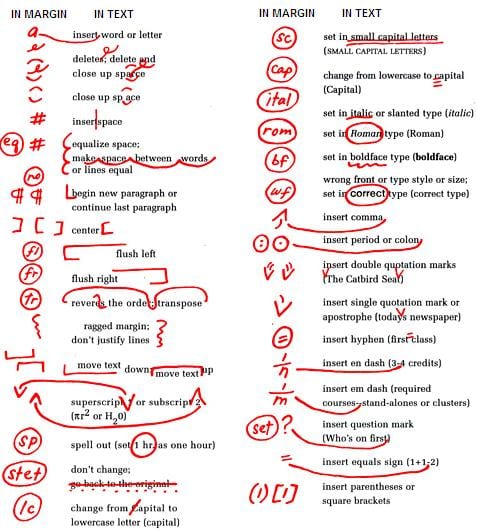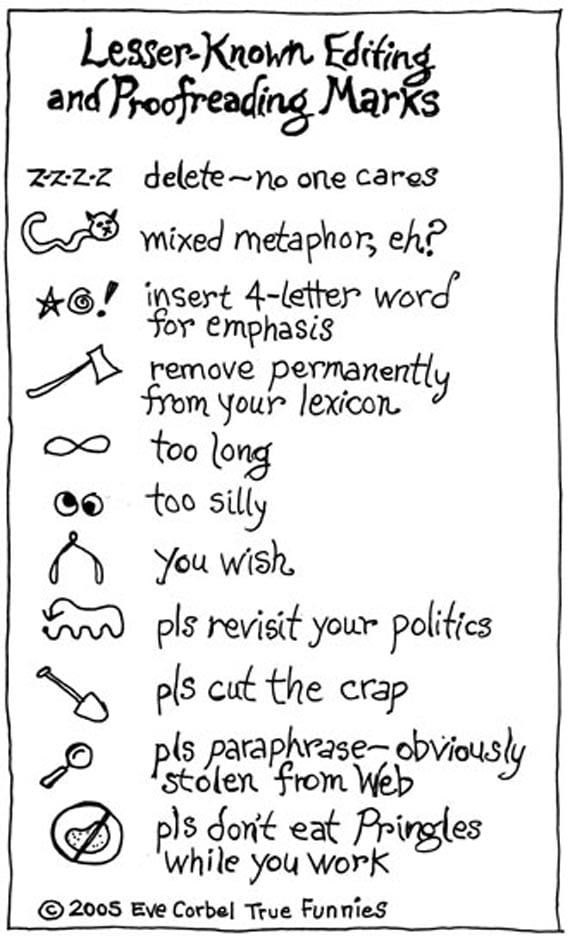
Proofreading symbols are like a foreign language to most people; they are often considered to be an indecipherable series of squiggles, letters, and symbols that mean absolutely nothing to the regular guy or girl on the street. Unless you know what these proofreading marks actually mean, using them to improve and develop your writing is absolutely impossible.
Let’s take a look at some of the most common proofreading symbols that are in use by professional native English proofreading services and explain why they are important for proofreaders who are looking for a career in editing.
You can read more about what proofreaders do in our guide to the differences between editing and proofreading.
What on Earth are Proofreading Symbols?
Proofreading symbols are the marks that a proofreader makes on a paper when they edit it. They are a coded set of instructions that point out where mistakes have been made and how a piece of writing can be improved. They are aimed at highlighting grammatical and punctuation errors as well as layout, formatting and vocabulary issues on a hard copy document (a physical, printed-out version). Let’s have a look at these dreaded proofreading symbols.
Read more: 69 hilarious reasons why you need to proofread
Proofreading Symbols Cheat Sheet
If you are interested in learning proofreading symbols, this cheat sheet will be of great use to you.
Breathe a Sigh of Relief
We know this: Proofreading is not easy!
If you took one look at the proofreading cheat sheet and felt a cold shiver run down your spine, don’t panic. The good news is that proofreading symbols are no longer as important as they once were. The wide-spread availability of computers means that the majority of proofreaders now highlight the required changes on an electronic copy of the document. In addition to this, instead of merely pointing out that there is an issue, most proofreaders now actually fix the problem and use the track changes tool on the word processor to show the client where the corrections have been made. The client is then free to either accept or reject each change as they see fit. This methodology makes the proofreading process much more efficient and allows the proofreader to provide the client with much more help than making a few squiggles here and there.
If all this is a bit mind-blowing, take a look at this humorous take on lesser-known proofreading marks:
Vappingo’s Proofreading Services
Unless specifically instructed otherwise, Vappingo’s proofreaders always use the track changes functionality in Microsoft Word. This is much more useful to you than proofreading marks alone because it provides you with practical help with your written English; it both highlights mistakes AND shows you how to remedy them. As one of our customers, you don’t need to spend hours trying to decipher proofreading symbols, you can simply review each change that the proofreader has made in turn, and either reject it or accept it. Simple.
Submit your document for our proofreading services today for a speedy, efficient proofreading service that gives you the help you really need.



hey
Helped me a lot.
🙂
Very helpful indeed
Tuan Sally
[email protected]